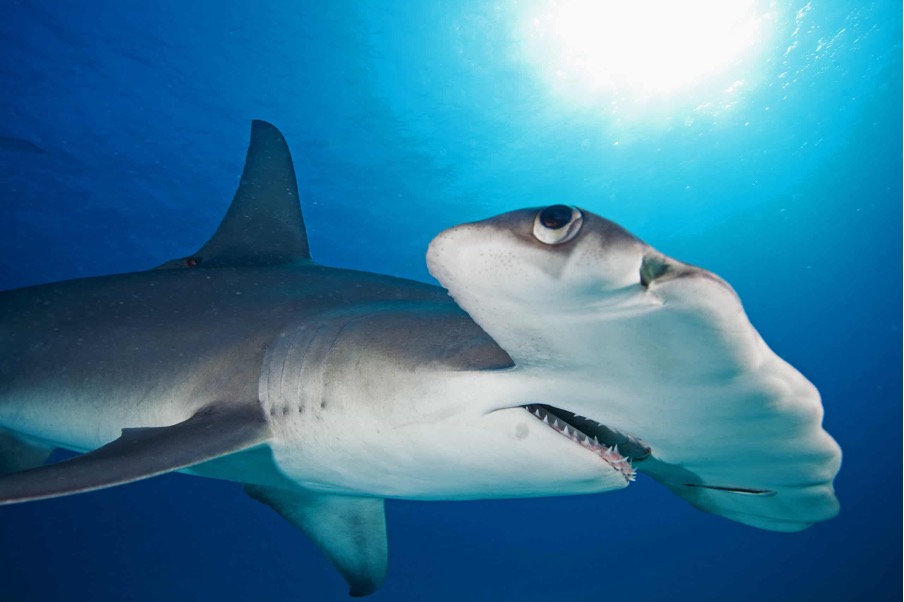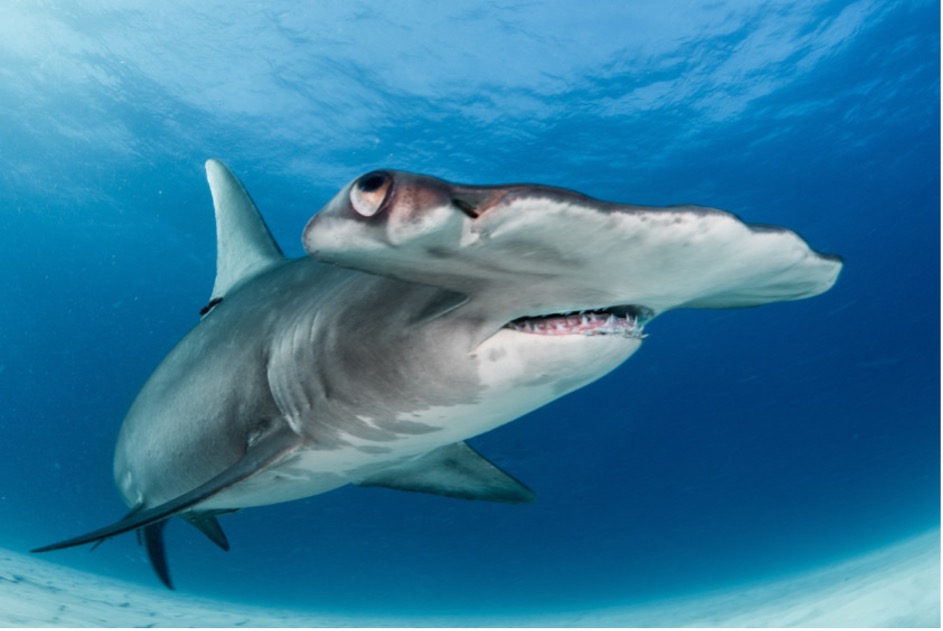By Fanis Michalakis,
Hammerhead sharks are a group of sharks that consists of 9 species. Their size varies from one species to the other, between 0.9 to 6 meters in length, and the primary characteristic that sets them apart from the other sharks is the shape of the head that looks like a hammer, hence their name. It is also called “cephalofoil”. The eyes of the shark are placed at the two ends of the hammer, giving it a peculiar look. They typically live in coastal areas in warm waters and can be seen in schools during the night and solitary during the night.
One key trait that makes sharks so effective predators is their heightened senses. The hammerhead sharks have superior binocular vision and depth perception compared to other sharks, and they can see 360° on the vertical axis, meaning everything that is below or above them. It is also believed that the shape of their heads allows them to better utilize their ability of electroreception when hunting by utilizing the ampullae of Lorenzini. These are special pores on the heads of all sharks, but by having them distributed at a wider area, the hammerhead sharks can use this sense more effectively than other sharks. They would place its head on the ocean floor and spot rays or other fish that had burrowed under the sand to hide. This benefits the shark since there would be no other way of detecting its potential prey, and there are many videos on the Internet where a hammerhead shark reveals a ray hiding under the sand and then chasing it down.

For some species there is a limited number of dietary studies performed on hammerhead sharks and many facts are based on observations and descriptive reports. It is well known, however, that they are apex predators or mesopredators, hunting other fish including rays and other sharks, as well as crustaceans and squid. One interesting observation in the feeding biology of the great hammerhead shark (Sphyrna mokarran) can be found in their teeth. More specifically, they have differently shaped teeth on the upper and lower jaw, with the former having serrated triangular teeth for cutting and the latter having sharp pointed teeth for grabbing and holding prey.
Hammerhead sharks are decreasing in population over the last years. This has led to all species being classified as Endangered (EN), Vulnerable (VU) or Critically Endangered (CR) apart from one species (Carolina Hammerhead) which we don’t know enough yet to estimate the situation. The main threat to the hammerhead sharks is overfishing, especially in some countries in Asia where their fins are used to create fin-soup, which is a delicacy to them. Sometimes, the method used to collect the fins from the shark is called “finning”. They pull the shark out of the water, cut the fins, and then drop the remaining body back in the water, which is then unable to swim. This is why this practice is lethal to them. Sadly, there are only few conservation efforts despite the critical situation that these sharks are facing, and some of the projects used for other species cannot be applied to the hammerhead sharks.
References
-
Gallagher, A.J., Klimley, A.P. The biology and conservation status of the large hammerhead shark complex: the great, scalloped, and smooth hammerheads. Rev Fish Biol Fisheries 28, 777–794 (2018).
- IUCN Red List: Hammerhead Shark. iucnredlist.org. Available here




